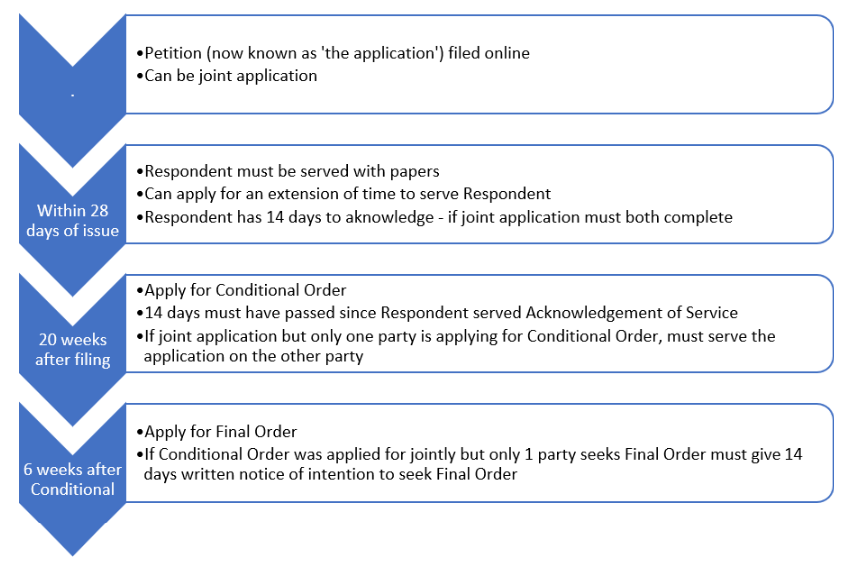The End of the Blame Game: No-Fault Divorce

The End of the Blame Game: No-Fault Divorce
Following on from our recent article on no fault divorce, new guidance has now been released to provide more information about the upcoming reforms. We set out below how parties will be able to make joint applications, the change in language, new regulations regarding service and the anticipated time scale within the new system.
The online portal will close at 4pm on 31 March 2022 following which all unsubmitted applications will be deleted. Any paper applications will also need to be received by 4pm on 31 March. Urgent applications will continue to be accepted until 5 April however the guidance is that applications which have not been submitted by the end of March should be resubmitted under the new legislation after 6 April.
Examples of the new forms have now been published online and these appear largely similar to the previous forms. It is strongly encouraged that parties, whether applying themselves or through solicitors, utilise the online portal to expediate applications.
Joint Applications
A significant change is that parties can now file a joint application to the Court. It is important to note that Applicant 1 will be liable for the cost of filing the application. Parties may choose to divide this cost between them or the financially stronger party may be assigned as Applicant 1. This will not affect the divorce application.
If an application is started jointly but one party does not cooperate with progressing matters, one party can continue the application alone. At the time of writing, there is not the option to convert a sole application into a joint application.
Language
It is well known that the language used within the legal sector can be outdated. The new legislation has removed the legal jargon in divorce proceedings, opting instead for common English which is easier for the lay person to understand. The wording used has been updated as follows:
|
Old Legislation |
New Legislation |
| Petition | Application |
| Petitioner | Applicant |
| Decree Nisi | Conditional Order |
| Decree Absolute | Final Order |
Service
Since the beginning of the pandemic, the use of email has become more common and accepted by legal professionals. Email will now become the default method of service, with the Court sending the sealed Application to either the Respondent’s usual email address or a specific email address provided by the Respondent.
If a party chooses to serve the Application personally, this is also to be done by email however a notice confirming service must also be sent to the Respondent’s postal address by first class post. If the Respondent does not complete the Acknowledgment of Service, the Applicant will be required to prove service occurred.
Time Scale
Given the new timeline, a divorce will take a minimum of 26 weeks (6 months) however this is likely to be extended whilst the associated financial matters are concluded. The below shows the stages of the divorce proceedings and the required timeline for each.

It is hoped that these changes simplify the current process and allow parties to remain amicable, which in turn will like save time and costs. IBB Law are fully aware of all the changes and ready to implement and support these on 6 April.
Speak to our Family Law Experts
Yasmin Kibble is a solicitor in the Family team and can be contacted on 01895 207 834 or yasmin.kibble@ibblaw.co.uk
